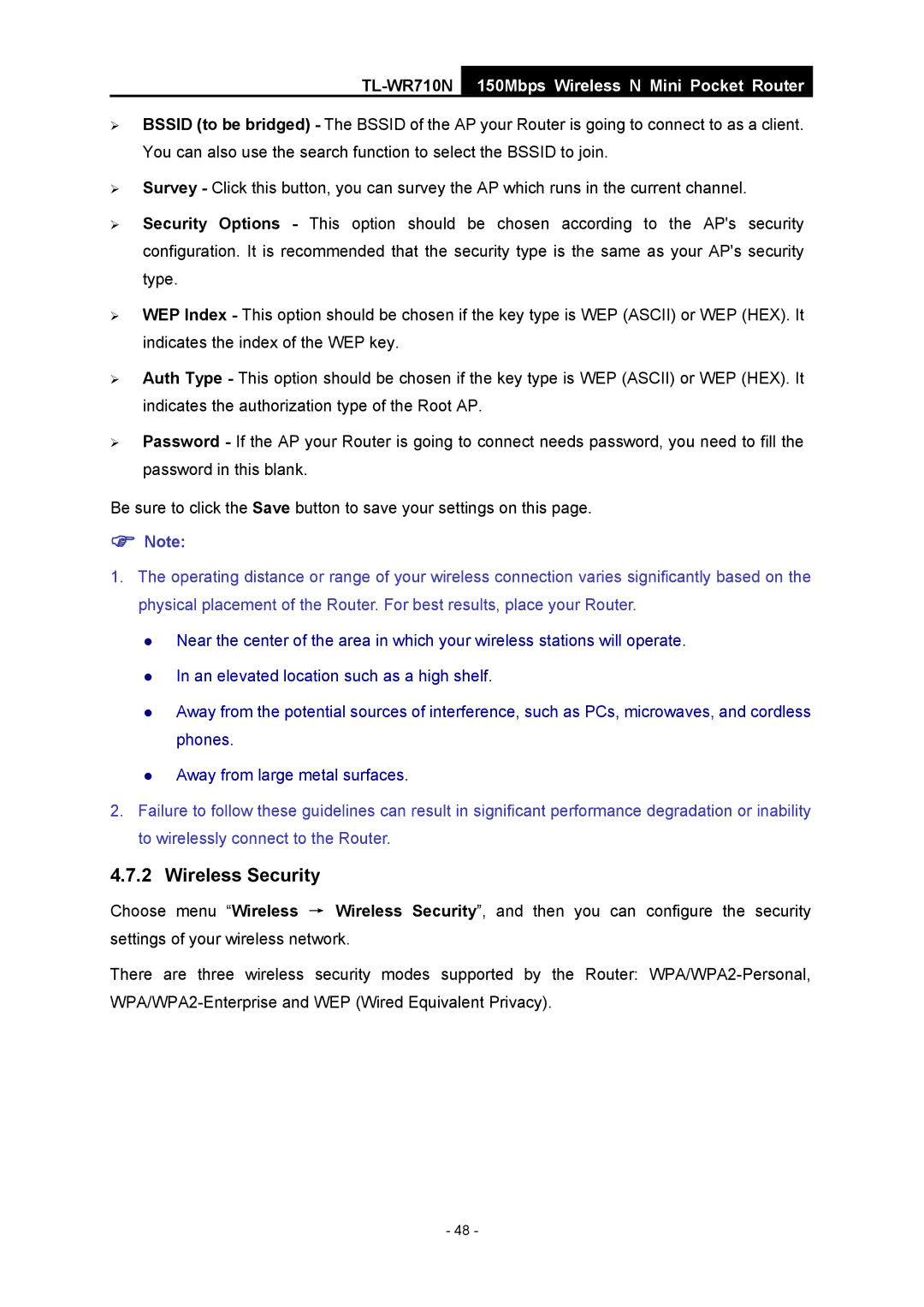TL-WR710N
150Mbps Wireless N Mini Pocket Router
¾BSSID (to be bridged) - The BSSID of the AP your Router is going to connect to as a client. You can also use the search function to select the BSSID to join.
¾Survey - Click this button, you can survey the AP which runs in the current channel.
¾Security Options - This option should be chosen according to the AP's security configuration. It is recommended that the security type is the same as your AP's security type.
¾WEP Index - This option should be chosen if the key type is WEP (ASCII) or WEP (HEX). It indicates the index of the WEP key.
¾Auth Type - This option should be chosen if the key type is WEP (ASCII) or WEP (HEX). It indicates the authorization type of the Root AP.
¾Password - If the AP your Router is going to connect needs password, you need to fill the password in this blank.
Be sure to click the Save button to save your settings on this page.
)Note:
1.The operating distance or range of your wireless connection varies significantly based on the physical placement of the Router. For best results, place your Router.
zNear the center of the area in which your wireless stations will operate.
zIn an elevated location such as a high shelf.
zAway from the potential sources of interference, such as PCs, microwaves, and cordless phones.
zAway from large metal surfaces.
2.Failure to follow these guidelines can result in significant performance degradation or inability to wirelessly connect to the Router.
4.7.2 Wireless Security
Choose menu “Wireless → Wireless Security”, and then you can configure the security settings of your wireless network.
There are three wireless security modes supported by the Router:
- 48 -
